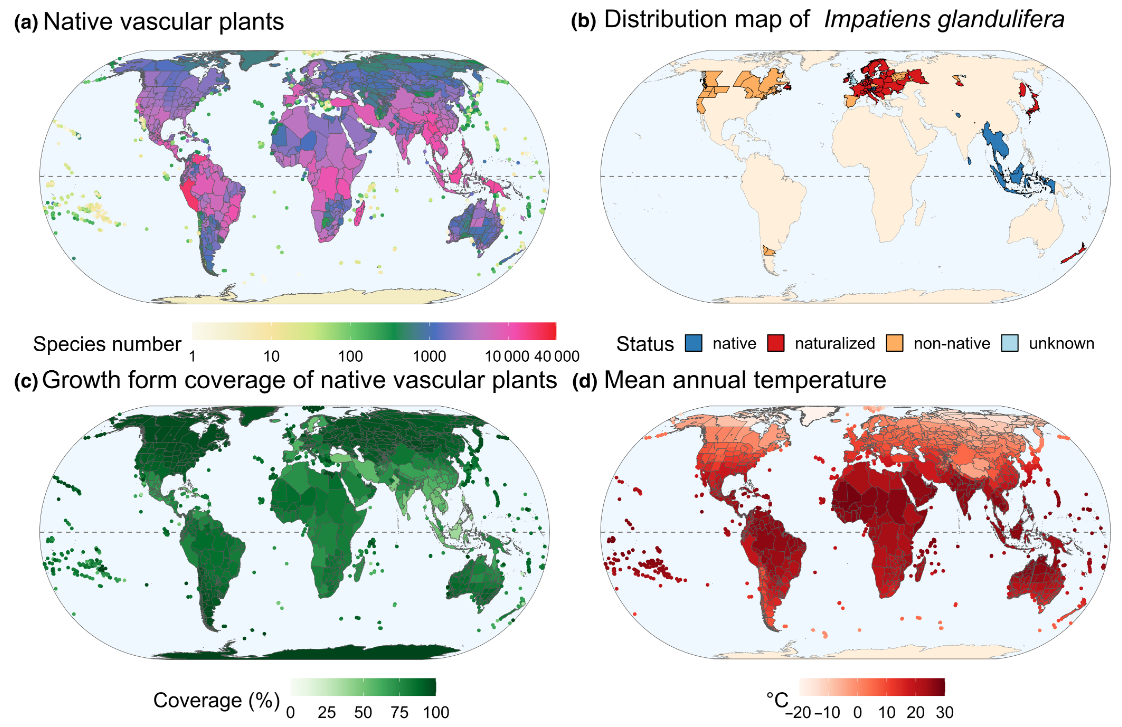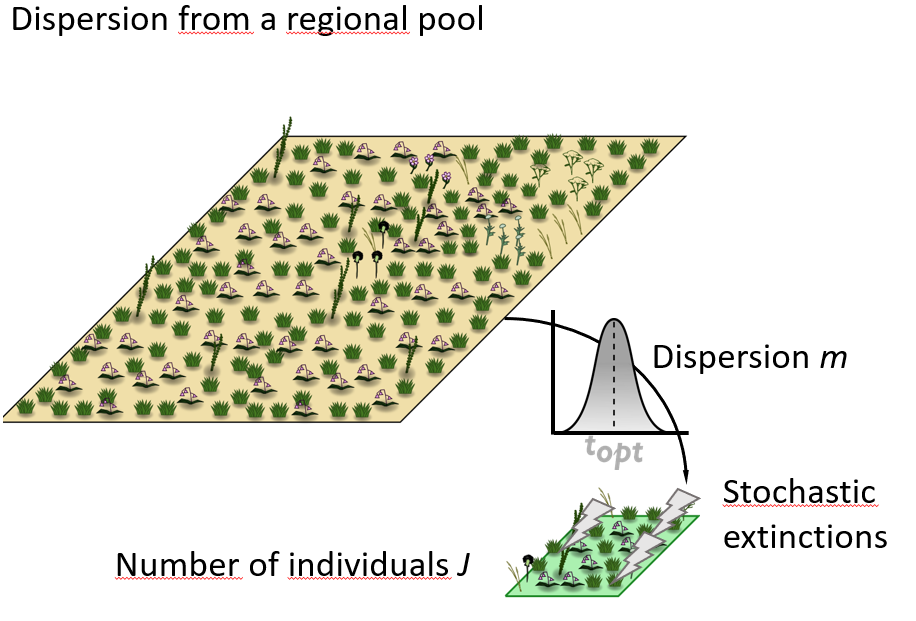Research interests
Diversity patterns at large scale
With a taxonomic focus on vascular plants, I am interested in patterns of biodiversity facets (taxonomic, functional, phylogenetic) across scales as well as their environmental drivers.

Selected publications
Denelle et al. (2023) Methods in Ecology and Evolution, 14:2738–2748. |
Community assembly
Species observed at the local scale are a small subset of a larger regional species pool. Using process-based models and empirical data, I am interested in unraveling the various processes that filter the arrival and establishment of species at the local scale.

Selected publications
Denelle et al. (2019) Oikos, 128:960-971. |
Munoz et al. (2018) Methods in Ecology and Evolution, 9:693–703. |
Functional diversity
Along with taxonomic and phylogenetic diversity, functional diversity is the third facet of biodiversity. I am interested in developing metrics to calculate and estimate functional diversity, as well as in empirical patterns.

Selected publications
Barajas-Barbosa et al. (2023) Nature 619:545–550. |
Grenié et al. (2017) Diversity and Distributions, 23:1365-1371.|
Bioregionalization
Across scales, species cluster into distinct taxonomic units called bioregions. There are many methods for doing this, and we have recently developed a tool that incorporates most of the existing bioregionalization techniques.

Selected publications








